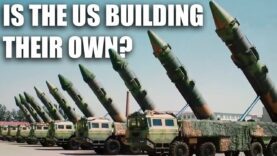Why Do So Many US Military Projects Fail?
Why Do So Many US Military Projects Fail?
Video Summary
Another issue is the complexity added by the need for stealth, computer systems, and other advanced technologies. The US military’s habit of making new systems overly complex, trying to make them do too much, and expecting them to be perfect, can lead to costly delays and cancellations.
The political system also plays a role, as defense budgets need to be approved by politicians, who are often more concerned with bringing jobs and money to their districts than with the merits of a particular project. This can lead to a culture of corruption, where contracts are awarded to favored companies, rather than to the best bidder.
Additionally, the need for secrecy and security can add to the cost and complexity of military projects, making it difficult to develop effective and affordable systems. When these systems fail, it can be due to a variety of factors, including poor design, misplaced priorities, and lack of clear direction.
In the past, the US military had a clear enemy in the Soviet Union, but with its collapse, the US military has had to re-evaluate its priorities and direction. This has led to a number of failed projects, such as the B-2 bomber and the Seawolf-class submarine, which were designed with specific capabilities in mind but ultimately did not meet those capabilities.
In contrast, other countries like Russia and China have a different approach to military development, where secrecy and lack of transparency can make it difficult to gauge the effectiveness of their military projects. The US military, on the other hand, is more open about its problems and failed projects, providing a more accurate picture of its progress.
























